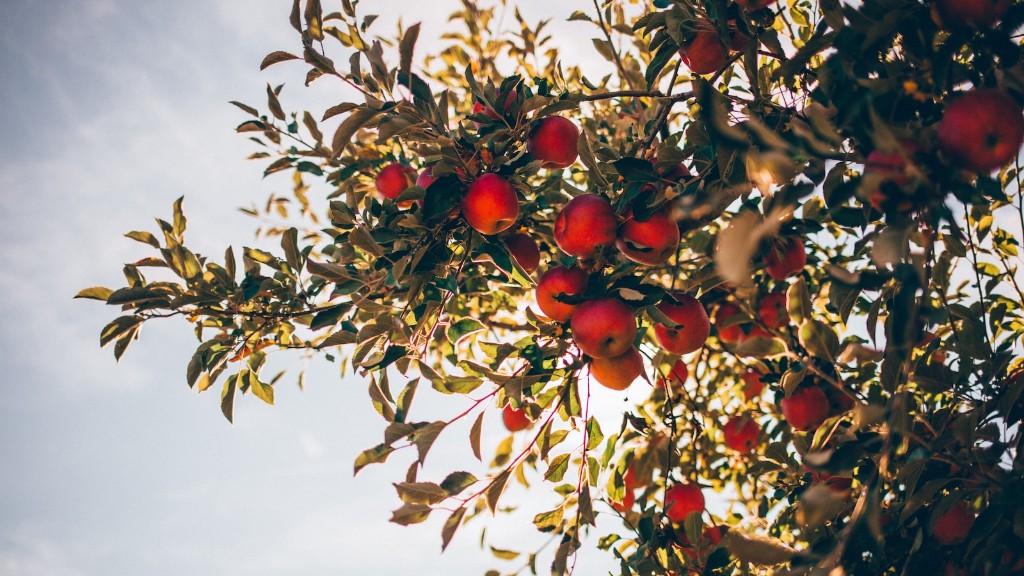Painting a Palm Tree Sunset
Few images come to mind with more beauty, romance, and serenity than that of a palm tree sunset, the sun slowly setting behind a sky filled with brilliantly colored oranges, reds, and purples. For many people, painting a palm tree sunset, whether on canvas or paper, can be a way to capture the beauty of the scene for posterity. And fortunately for those just starting out, it’s not as intimidating as it might seem.
For this particular painting, you will need a few supplies: acrylic paints, a large canvas (24″x36″ is ideal), a set of paintbrushes, and an eraser. As to the colors, you will need to determine where your sun will be and decide on a color palette based on that. For example, if you have your sun setting in the lower right quarter of the canvas, your color palette should consist of lighter colors on the left side–your orange and yellow tones–with darker colors on the right side, such as deep reds and blues.
Next, it’s time to sketch out your composition. A few simple lines is all you need to establish the horizon line, the beach and water, and the palm trees. Be sure to leave enough space for negative space, as this can be a great way to emphasize your tree. Professional artists like Joseph Zbukvic recommend a gestural line for the sketch, as this rough but expressive line can add a sense of energy to the painting.
With your sketch complete, it’s time to begin painting. Start by creating the universal intermediate tone (UIT) layer. This evenly colored basecoat serves as the foundation upon which you’ll create your painting. You can use a mix of acrylics, such as some mixtures of ultramarine blue, raw umber and titanium white. Apply this tone in a thin, even layer using a large brush.
Once your UIT layer is dry, it’s time to begin adding color. Start with the lighter colors, and work in layers, adding the darker tones later. As you move onto the darker colors, focus on creating shadows and shapes with the brushstrokes. This can create a sense of realism that will help your painting to come alive. To finish up, add in a few finishing touches such as tree trunks and water, and you should be ready to call your painting complete.
Painting a Palm Tree Silhouette
Once you’ve gotten the hang of painting a palm tree sunset, you can move on to more complex compositions, such as painting a palm tree silhouette. This is a particularly effective technique for painting a sunset, as it instantly adds drama and mystery to the scene.
A palm tree silhouette involves adding in layers of darker tones decreasing near the horizon. For this, you’ll need some darker colors, such as cadmium yellow deep or ultramarine blue, as well as a slightly lighter tint of the same color. Begin by adding in your darkest tone, making sure to keep in mind where the horizon line will be. This will give you an idea of how far down to apply the tone.
Once that layer is complete, add in your mid and lighter tones, gradually getting lighter as you progress towards the horizon. This will give your painting a more realistic look and add to that sense of drama and beauty. As with painting a traditional palm tree sunset, you will want to leave plenty of negative space to add emphasis to your palm tree silhouettes.
A few tweaks in the form of trees, buildings, birds, or the moon can be a great way to elevate your painting and make it more lifelike. As with the paintings of Thomas Kinkade, the moon often serves as an effective companion to the setting sun, adding an extra sense of atmosphere and emotion.
Using Color to Emphasize the Scene
When painting a palm tree sunset, the colors you choose can have a major impact on the overall mood and atmosphere. Generally, when it comes to sunsets, you’ll want to go with a vibrant range of pinks, oranges, and purples. These can be used to great effect in creating a warm, inviting atmosphere.
However, many great paintings have also made use of cool tones instead, such as cobalt blue and light purple. These can create a more somber mood and can help to emphasize the silhouette of the palm tree. When using cool tones, pay extra attention to the lighting and the shadows you create. This can help to create a sense of depth in your painting and add to that feeling of serenity.
For example, Leonardo da Vinci was a master at using lighting to create depth in his works. In some of his sunsets, he would use a single light source with a few reflections on the water to emphasize the sunset. This can help to create a sense of motion and atmosphere, which can really bring the painting to life.
Painting the Right Kind of Palm Trees
When painting a palm tree sunset, it’s important to remember the importance of the palm tree itself. If you want your painting to look realistic, it’s important to get the trees just right. Luckily, this isn’t as hard as it might seem.
When drawing the palm trees, make sure to draw loose but precise lines. This will help to add energy to the painting and make the scene look more realistic. It can also help to draw palm trees from different angles and perspectives, as this will give the painting a greater sense of depth.
It can also be beneficial to look up some images of palm trees in order to get an idea of their shape and size. This can help you decide on the size and position of the palm trees in your painting, as well as give you an idea of the type of vegetation that could be in the background. This can really add to the realism of the painting and help to create a more beautiful and lifelike image.
Creating a Sense of Atmosphere
When painting a palm tree sunset, it’s important to keep in mind the atmosphere of the painting. That is, you want to evoke certain emotions from the viewer. To do this, add a few elements of realism to the painting, such as birds, waves, clouds, or people.
The birds, for example, can serve to add a sense of motion and life to the painting. Additionally, the presence of people or animals can add an extra sense of drama to the scene, as it will evoke a sense of either joy or sorrow in the viewer. Whatever elements you choose, they should be used sparingly. Too many elements will detract from the main focus, the palm tree.
Finally, try to create a sense of atmosphere with the colors you choose. As previously mentioned, a vibrant combination of oranges and purples can create a sense of warmth and beauty, while a more muted combination of blues and greens can evoke a more somber mood. Whatever colors you go for, make sure you keep them consistent throughout the painting. This will help to tie the painting together and make it look more realistic.
Capturing the Moment
Ultimately, the goal when painting a palm tree sunset should be to capture the moment, to evoke the sense of beauty, serenity, and joy that you feel when you look upon the setting sun. You can do this by putting an emphasis on the colors you choose and the lighting you use, as well as the composition and the elements in the scene. With practice and dedication, you should be able to create a beautiful, realistic painting that you can be proud of.
Adding Extra Elements
In addition to the sunset itself, you can also add in some extra elements to add even more realism to your painting. This can include clouds, waves, sand, and even boats. Each of these elements can add an extra level of detail to your painting, as well as a sense of life and atmosphere. Additionally, all of these elements will reflect the light, adding to the sense of realism and the overall beauty of the painting.
A few extra touches and elements can also help to add a sense of movement to the painting. For example, a few seagulls soaring in the sky, a boat sailing in the background, or a crashing wave in the distance can serve to evoke feelings of joy and freedom. Likewise, a few light reflections on the water or sand can serve to add a sense of motion and life to the painting.
Finally, adding a few fine details can really tie the painting together. These can include things such as pebbles on the beach, a dock stretching out from the shore, or a sprinkling of stars in the night sky. These elements will help to make the painting look more realistic and help to soften any harsh edges you may have.
Finishing Touches
Once you’ve created your masterpiece, you’ll want to make sure everything looks just right before you call it finished. Begin by cleaning up any rough edges and blurring out any harsh lines. A few well placed highlights and shadows can also serve to add depth and realism to the painting.
It can also be helpful to step back and look at it from a distance. This way, you can get a better look at the composition and make sure everything looks balanced. Once you’re happy with the painting, you can go ahead and add in a signature or title and call it finished.
Painting a palm tree sunset can be an enjoyable and relaxing activity, particularly for those just getting started. With a few simple steps, you can create a beautiful and realistic painting that can serve to evoke feelings of serenity and beauty in both the artist and the viewer.




